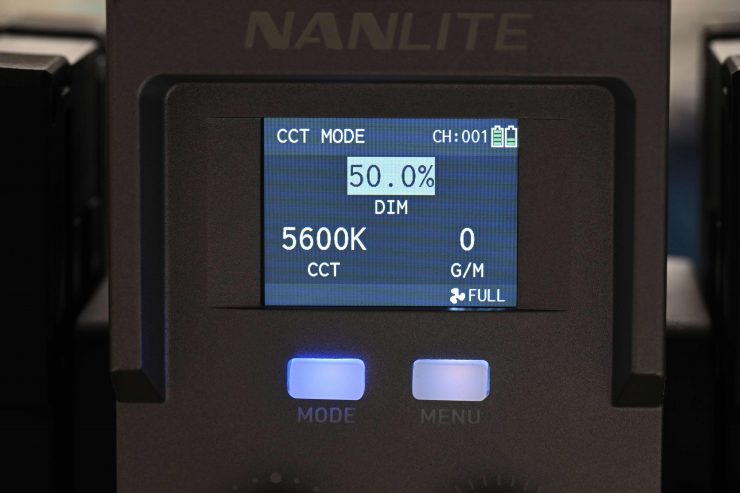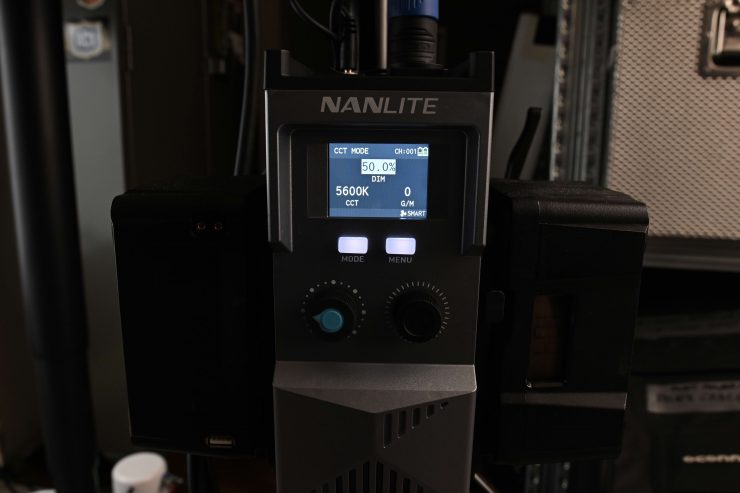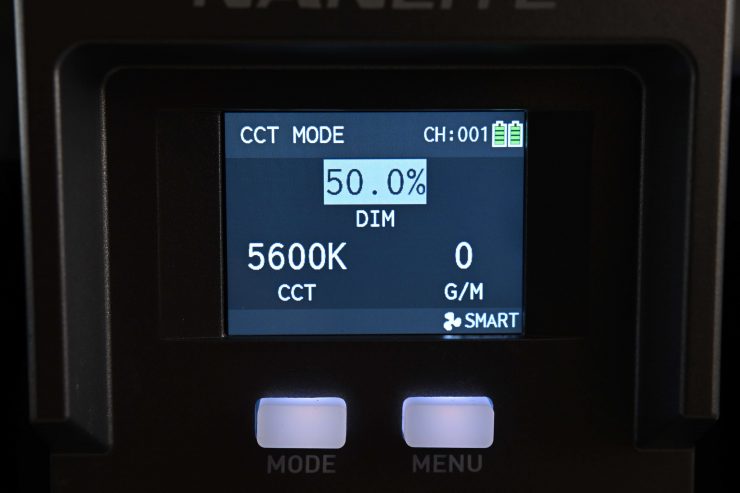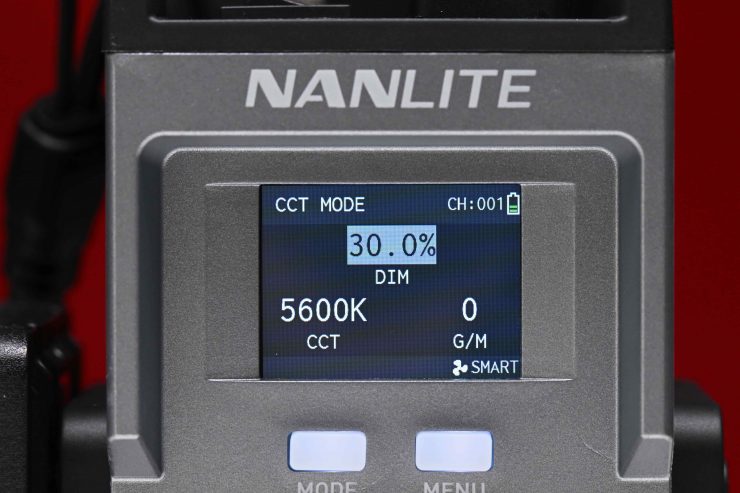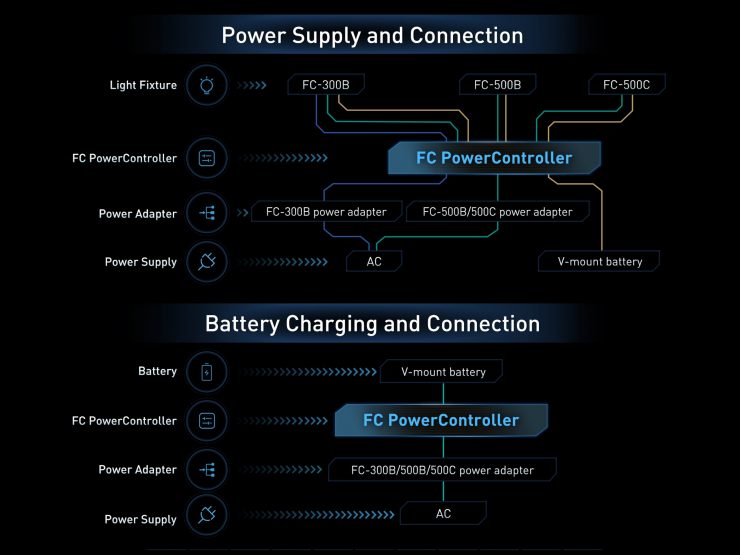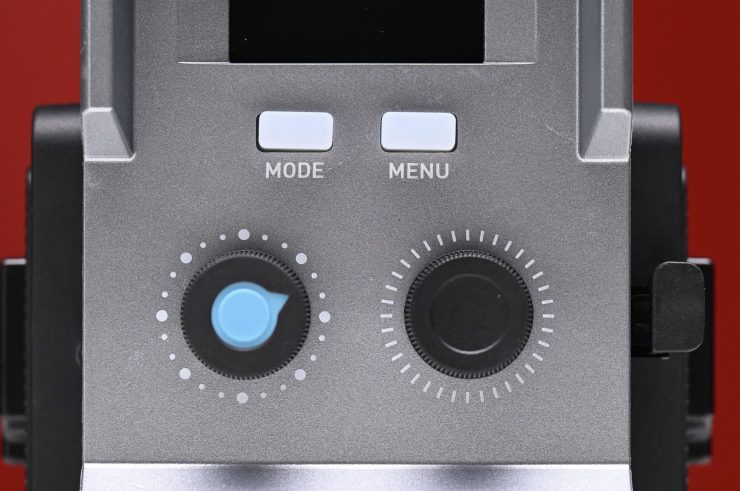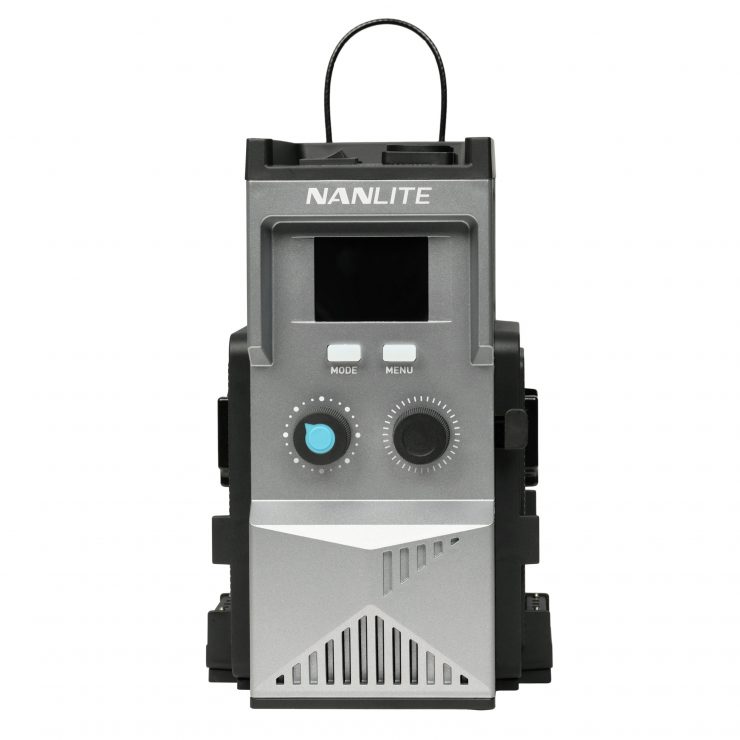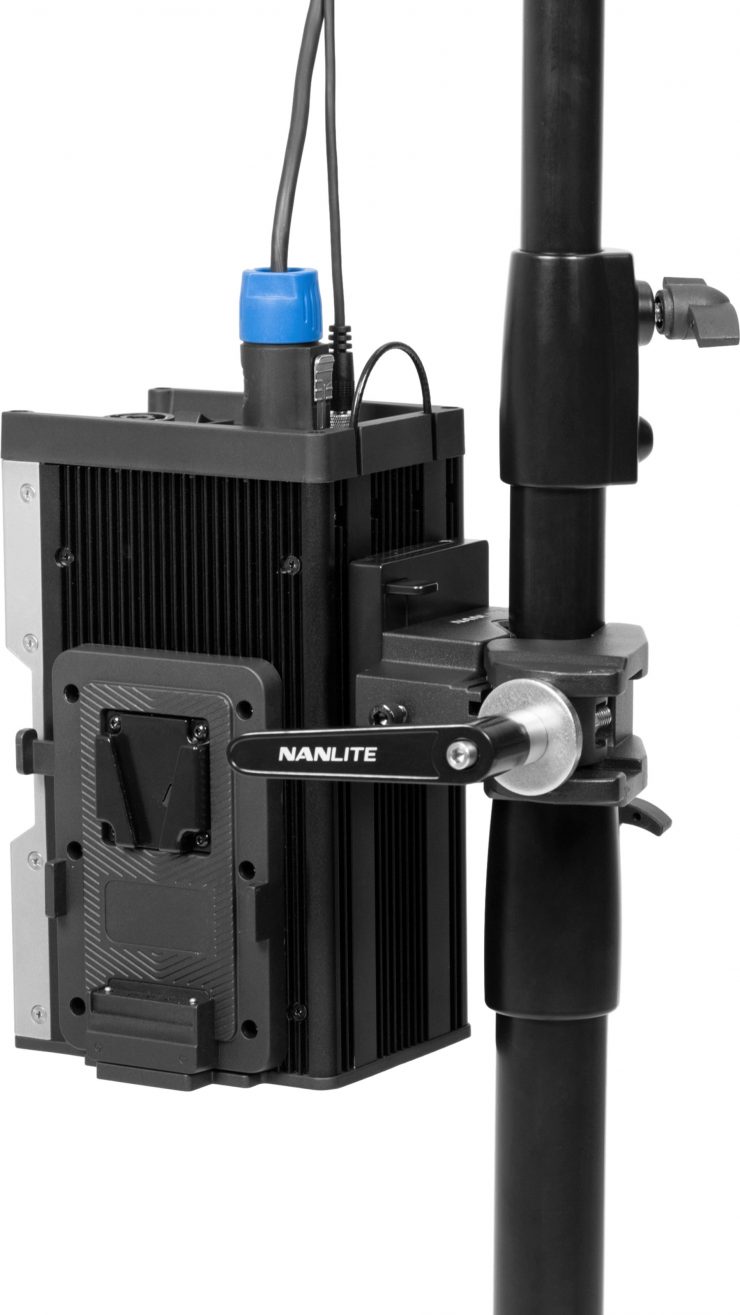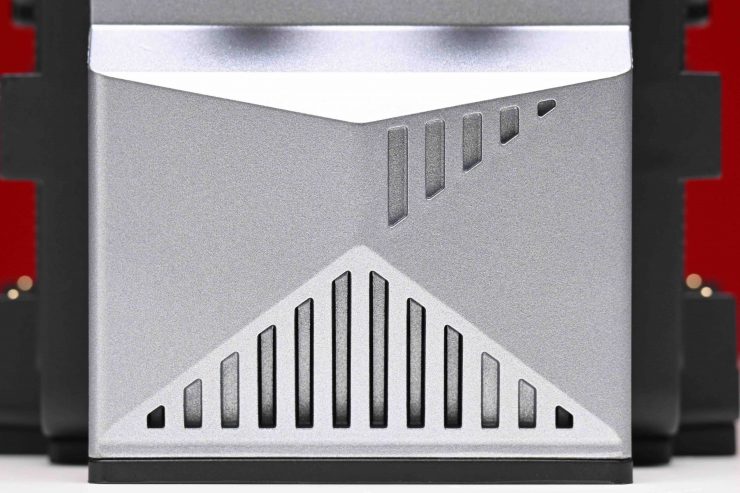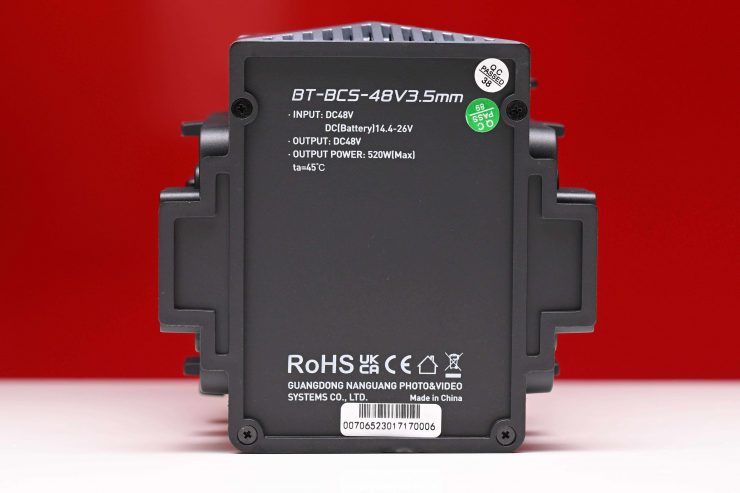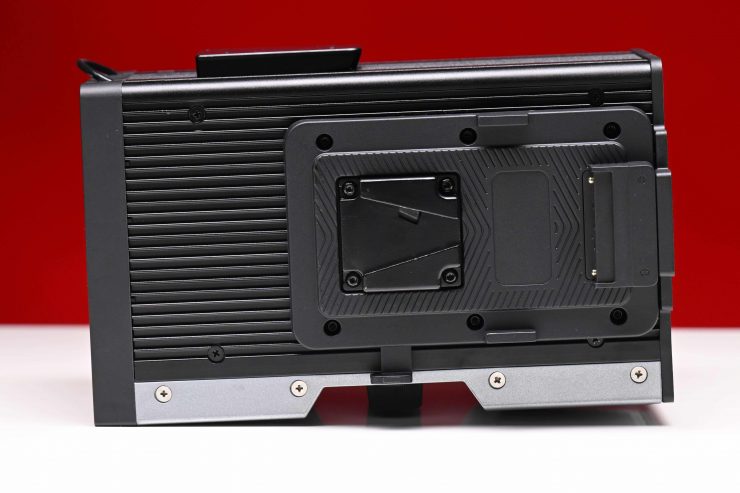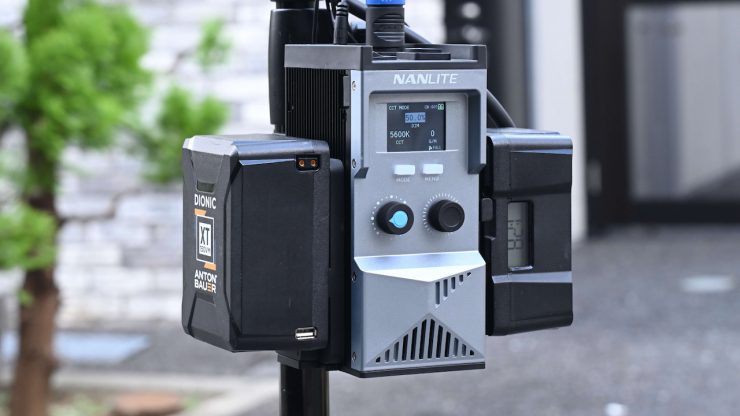
The NANLITE FC PowerController is a comprehensive power and control solution that expands the capabilities of the new FC-500C, as well as the FC-300B and FC-500B. It can power the compatible FC series fixtures from V-mount batteries and offers control of light settings.
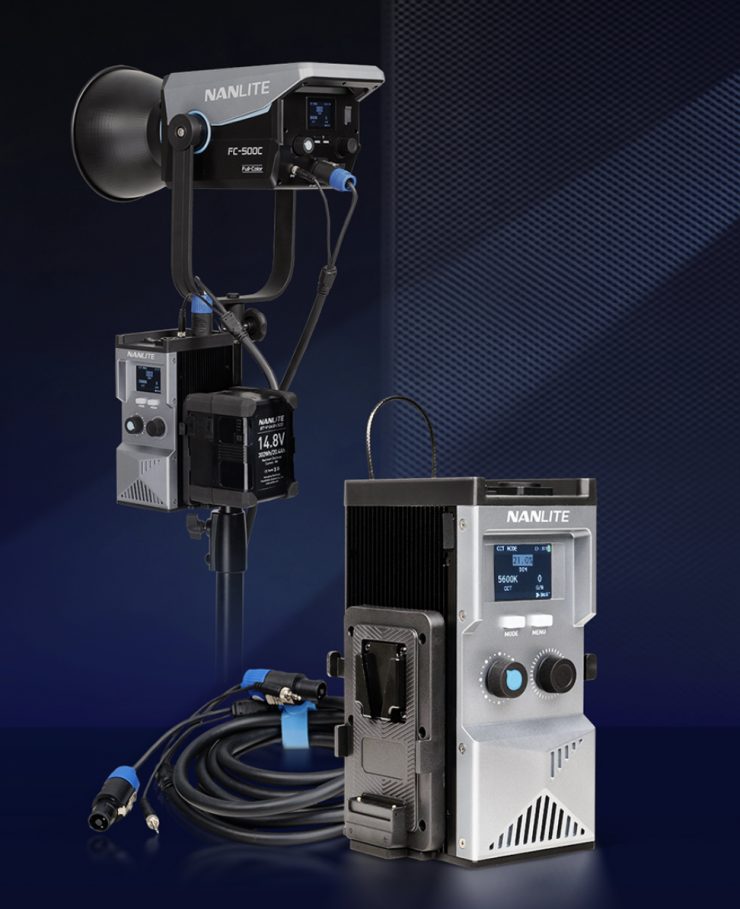
The combination of the FC PowerController with an FC-300B/500B/500C means you can use the fixtures outdoors, or in other environments without access to AC power.
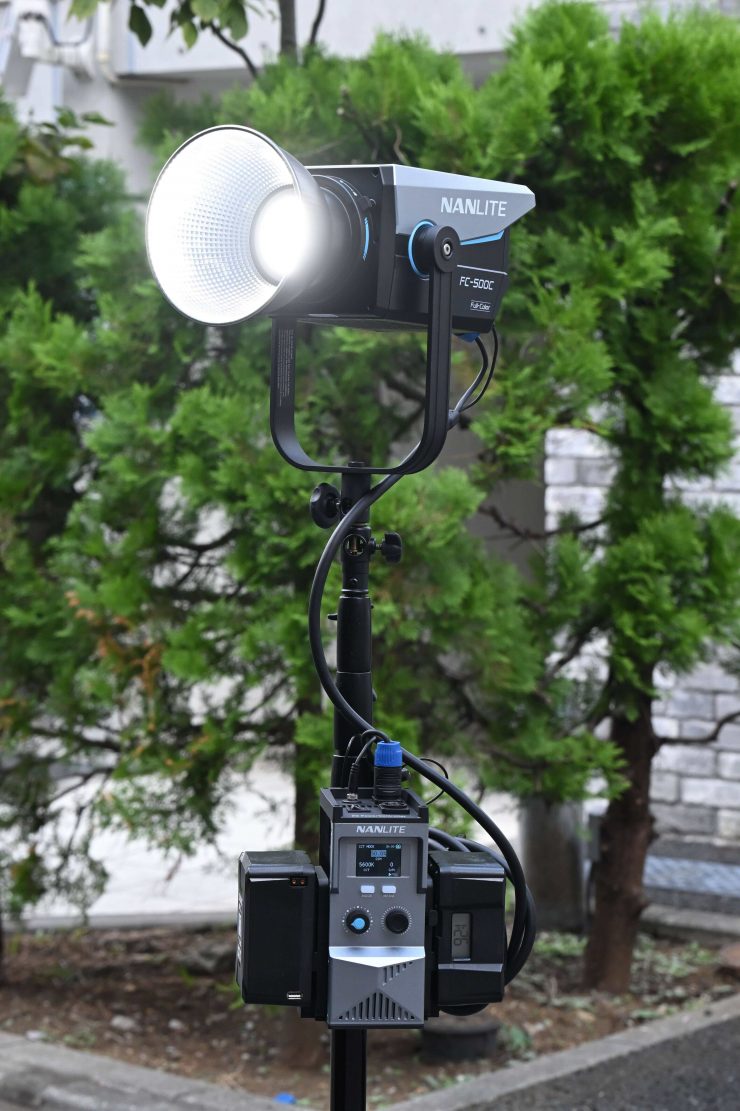
I am glad that NANLITE has introduced this product as it makes their FC series fixtures a lot more versatile as you can now run them remotely in the field. The FC series are fairly lightweight and compact spotlights, but their inability to be run from camera batteries did somewhat limit what you could use them for.
I think NANLITE eventually recognized this and decided to come up with a solution.
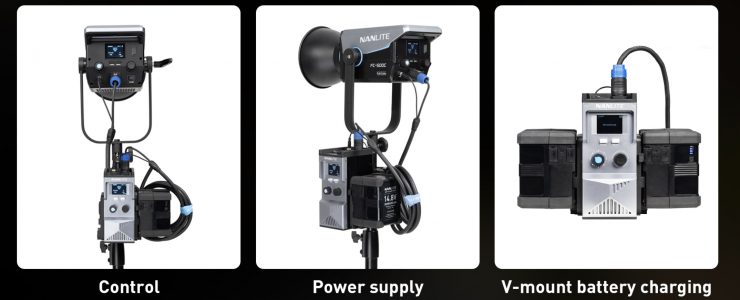
Key features
- Designed with two-inch screen, two buttons and two knobs
- Measures 130.6×135.5×204.5mm /5.14×5.33×8.05″
- Weighs only 1.61kg / 3.55lb
- Compatible with FC series light fixture with a DC 48V 4-pin input socket\
- Power light fixtures from V-mount batteries
- Power light fixtures from AC outlet by connecting the fixture included power adapter
- Provide wired control for light fixtures at a distance of up to 3m/9.84ft
- Charge one or two 14.4-14.8V or 26V batteries simultaneously
Using V-mount batteries
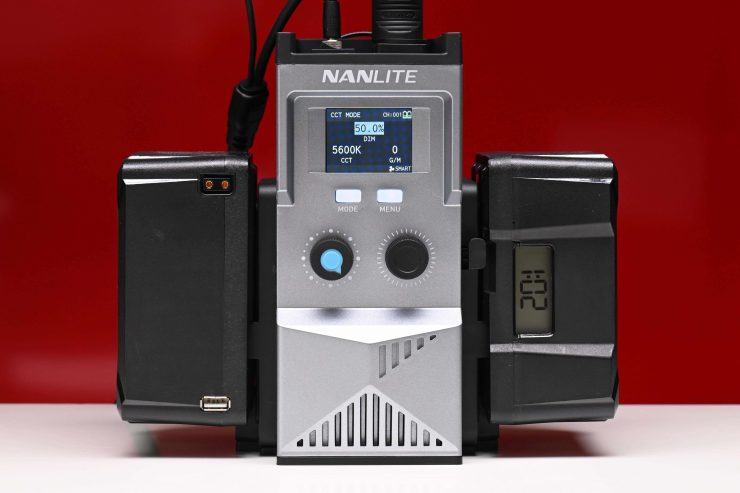
Connecting the FC PowerController allows the FC-300B/500B/500C to be powered by either one or two 14.4-14.8V / 26V batteries. The maximum output of each different fixture varies depending on the quantity and voltage of the V-mount batteries used.
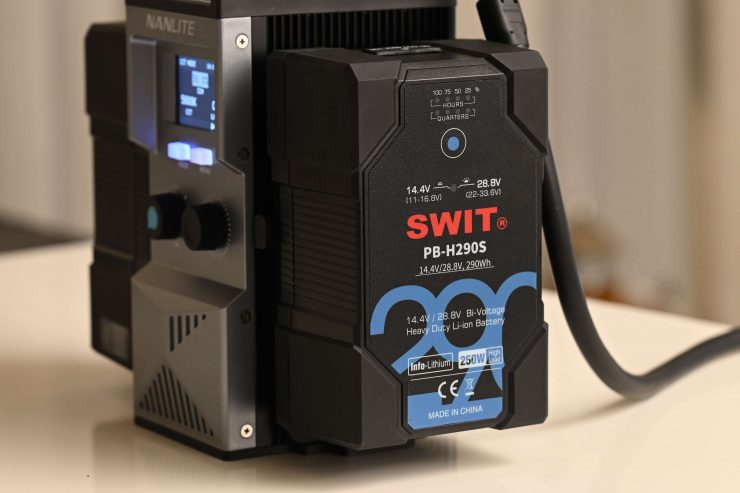
For instance, according to NANLITE, it requires two 26V high-performance V-lock batteries to run the FC-500C at full output. Now, I tried running 2x SWIT PB-H290S 14.4V/28.8V batteries and the FC PowerController didn’t recognize that the batteries were dual voltage and just assumed they were 14.4-14.8V and it limited the output to 50% even though the batteries can supply a voltage from 22-33.6V.
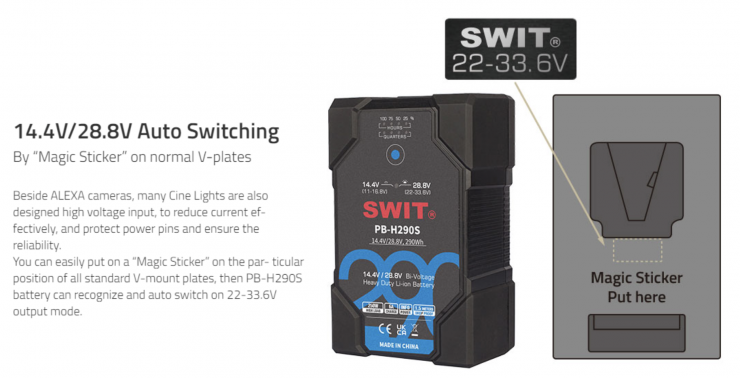
UPDATE: SWIT contacted me and said that they have a Magic Sticker available that you can place on the V-mount plate on the light and then the power supply/controller will recognize it as a higher output battery.
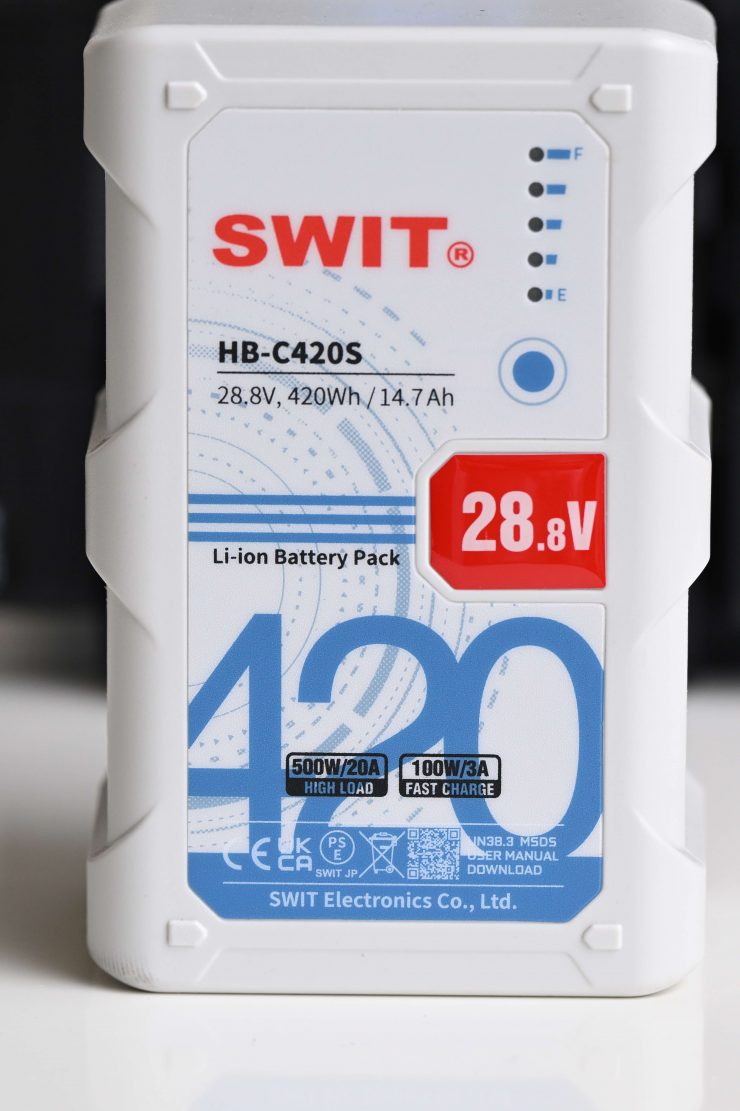
I thought I would try using 2x SWIT HB-C420S 28.8V batteries to see what happened, and the FC PowerController wouldn’t even turn on. I reached out to NANLITE to ask about this and they told me that the FC PowerController can work with dual-voltage batteries, however, you need to switch the voltage on the battery first, if they have that capability.
I also reached out to SWIT and they told me that they have been able to get their HB-C420S 28.8V batteries to work with the FC PowerController without needing any Magic Stickers. I have seen a video of these batteries working with the FC PowerController, but they wouldn’t work on the FC PowerController I was testing.
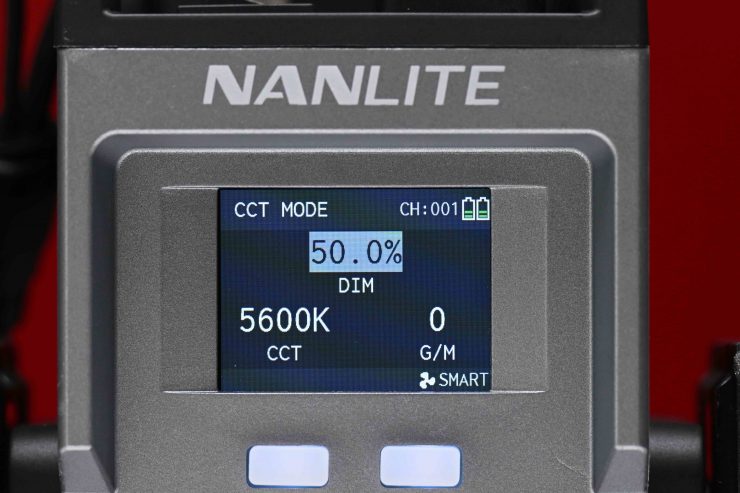
If you use two 14.4-14.8V, regardless of their capacity, the light will only run at 50% output.
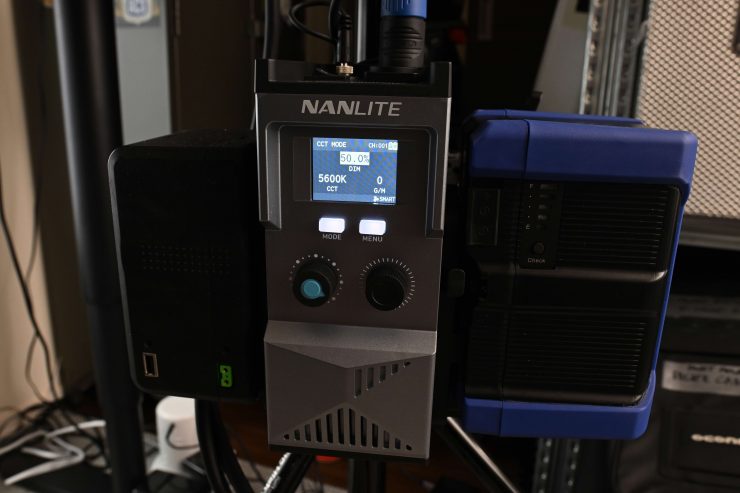
It didn’t matter if I put two 150Wh batteries on the FC PowerController or a 290Wh and a FXLION BP-HP600 559Wh V-lock Battery, the output is capped at 50%. The only advantage you get from running higher-capacity batteries is longer run times.
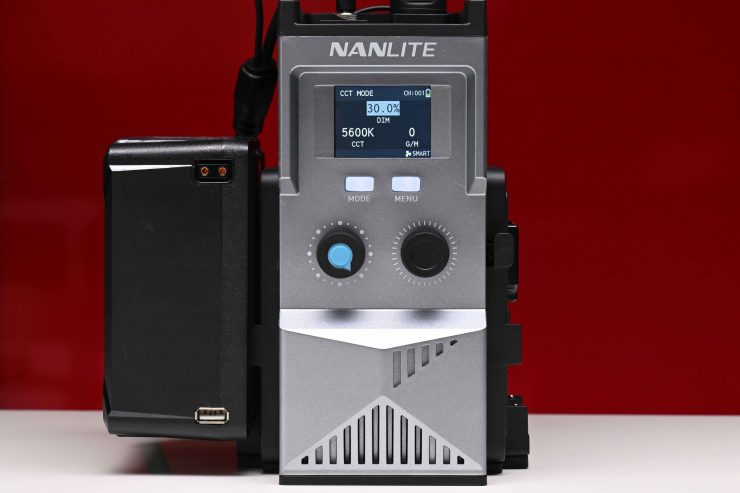
Using a single 14.4V battery on the same light will limit output to 30%.
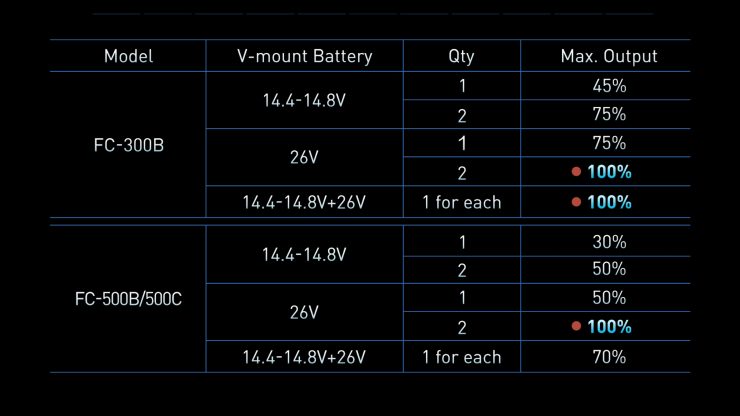
The FC PowerController can also run a fixture from AC by connecting the power adapter that originally came with the FC-300B/500B/500C. This permits connected fixtures to switch over to battery power if the AC power supply is disconnected. This is also handy when fixtures need to be moved quickly around the studio or location.
Control
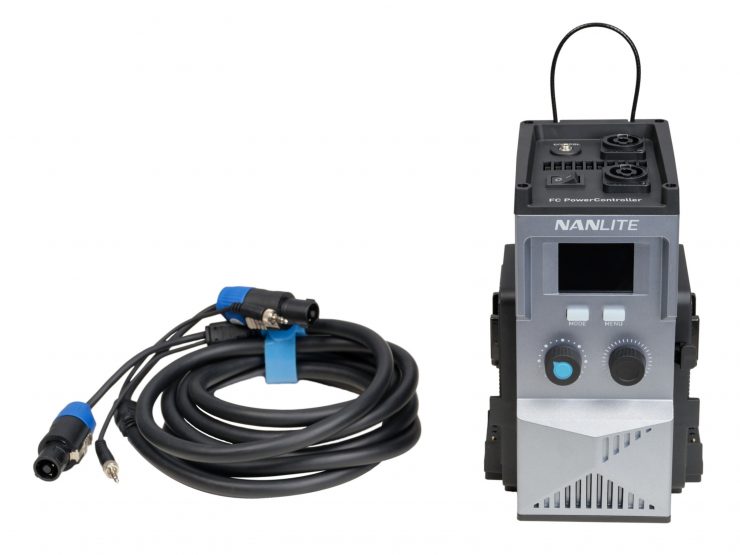
The FC PowerController provides wired control for the FC-300B/500B/500C at a distance of up to 3m/9.84ft. You simply connect to the fixture via the included connection cable and take control of the light.
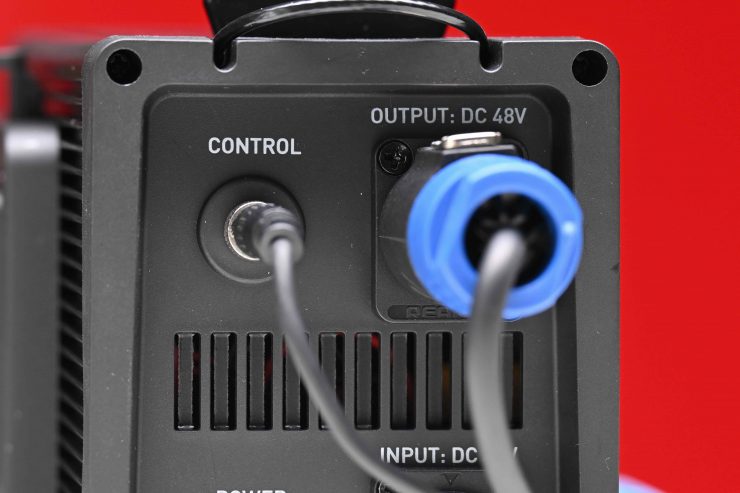
You need to connect the PowerCon cable to the Power Output on the FC PowerController and then the Power Input on the FC series light. You also have to connect the 3.5mm cable to the DMX input on both the FC PowerController and the FC series light.
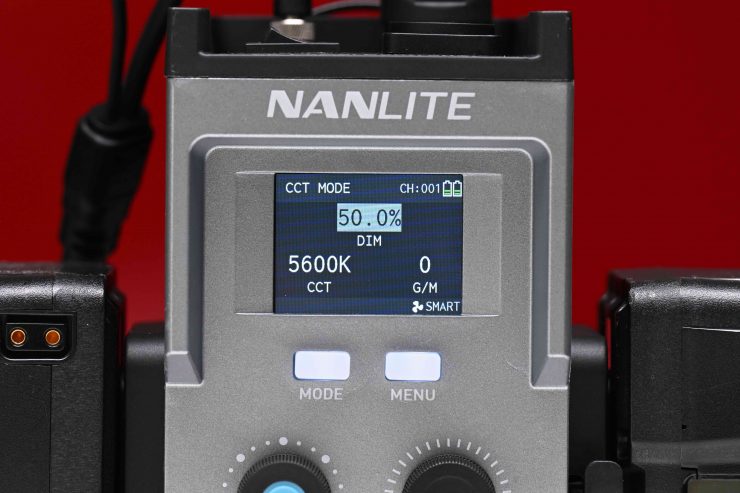
There is a two-inch display to show status, with two knobs and two buttons to adjust settings. The controls and menu system are exactly the same as you would find on the FC-F300B, FC-500B, and FC-500C.
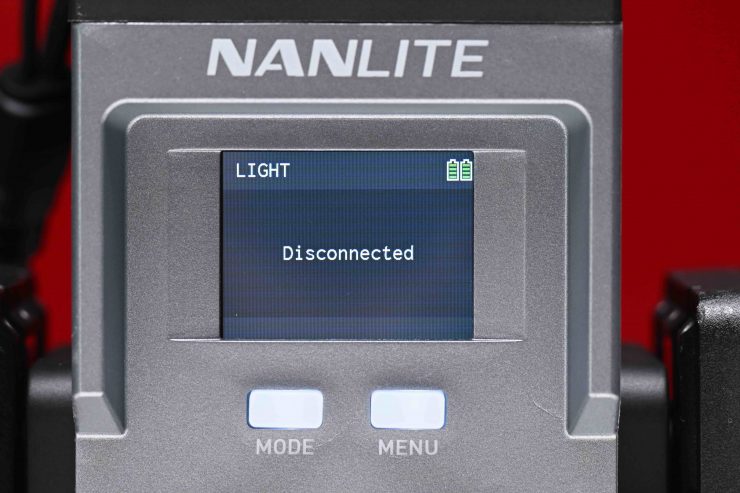
The only small issue you can run into is that if you don’t screw the cable into the DMX input on both the light and the FC PowerController correctly you will get a message on the screen that says Disconnected.
Size & Weight

The FC PowerController measures 130.6×135.5×204.5mm / 5.14×5.33×8.05″ and weighs 1.61kg / 3.55lb. It can be easily carried or hung using the in-built rope.
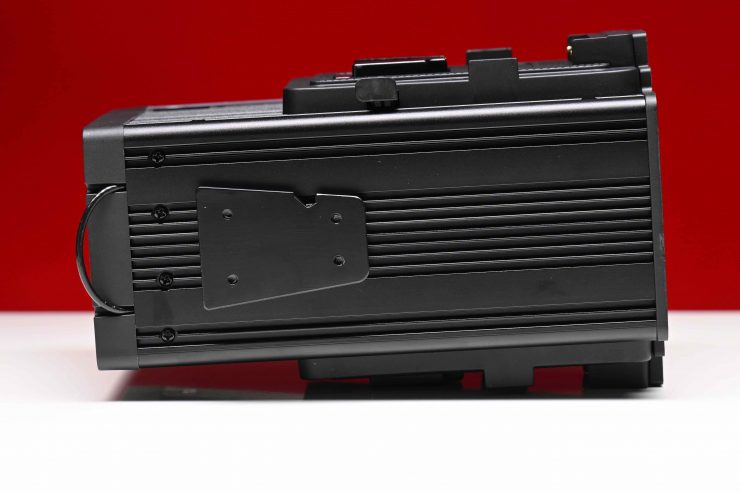
In addition, the unit is equipped with a quick-release plate on the rear, allowing it to be mounted on a light stand or truss using an optional quick-release clamp
Build Quality
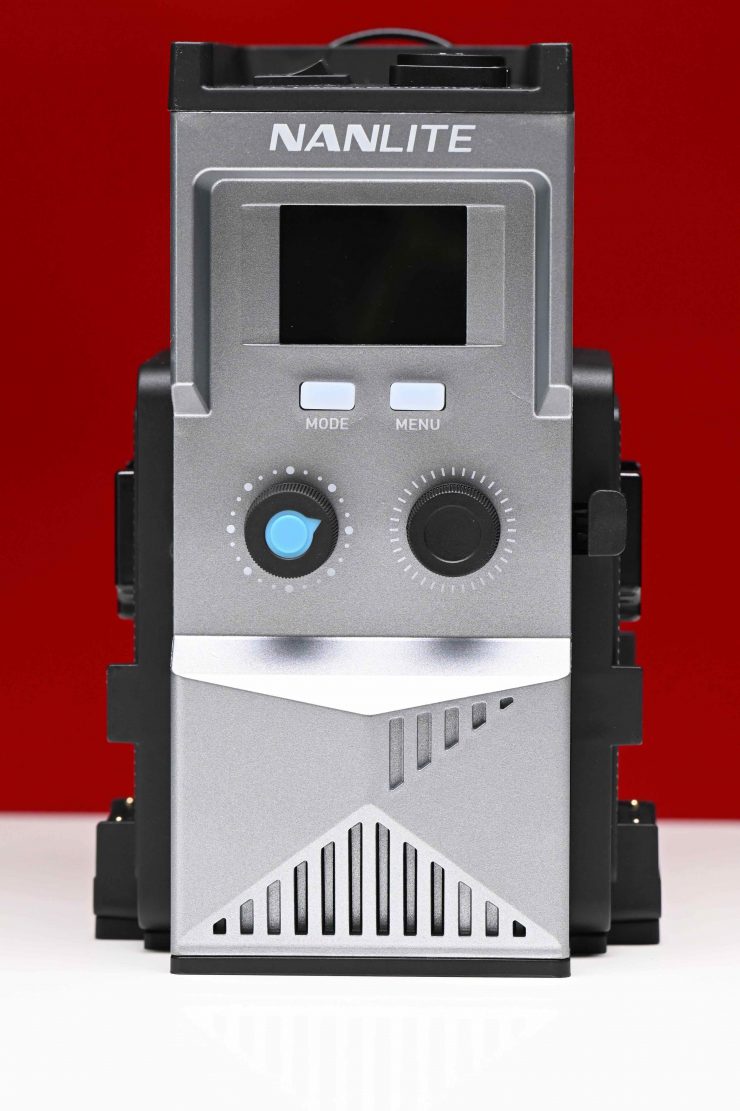
The FC PowerController is fairly well constructed and it features an aluminum alloy body.
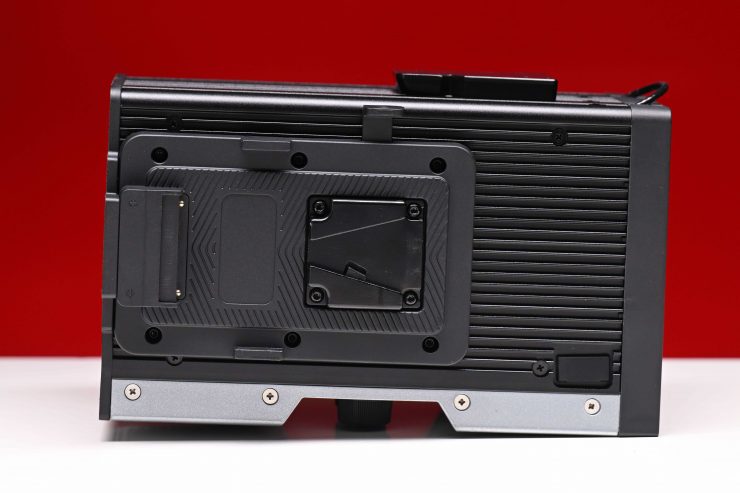
It has three aluminum alloy heat sinks and a built-in fan. The fan is claimed to run quietly and at the same time ensure heat dissipation, providing the best possible recording conditions for the shooting scene.
I didn’t find the fan to be overly noisy and it didn’t make enough noise to be of any concern.
Simultaneous V-mount Dual Battery Charger
The FC PowerController can also act as a portable V-mount simultaneous dual battery charger. It can charge one or two 14.4-14.8V or 26V batteries at the same time by connecting to AC using the power adapter that comes with each FC-300B/500B/500C.
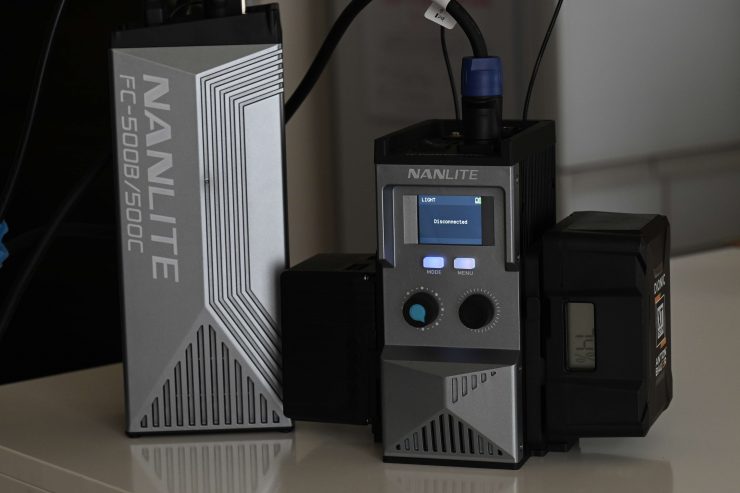
Now, the caveat with this product is that if you want to charge batteries you still need to carry around the power adapter that comes with the light. At least in my opinion, this is a little counterintuitive. I am not sure why NANLITE didn’t design the FC PowerController so you could plug a regular power cable straight into it.
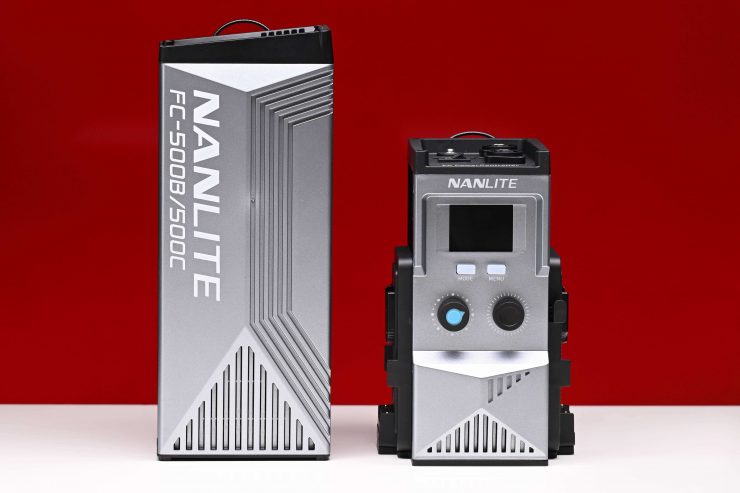
While the power supply unit isn’t too big if you are using the FC-300B, it is a different story with the FC-500B and FC-500C. The power supply is actually larger and heavier than the FC PowerController.
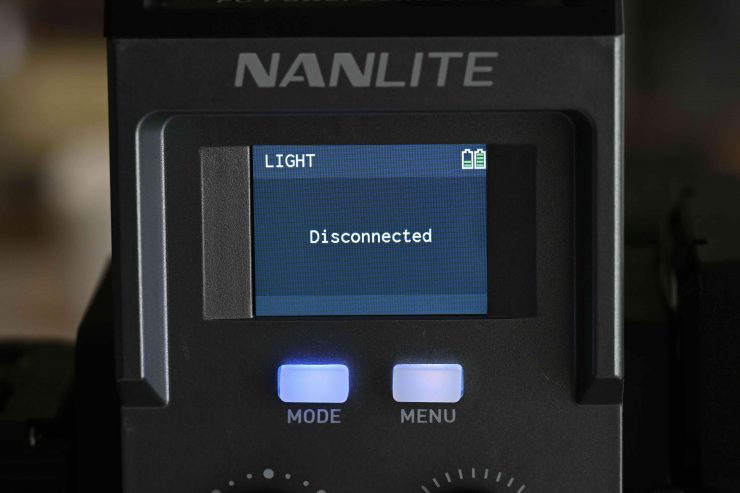
The other caveat is that there are no large icons or information about the charging status of the batteries. You also get this slightly annoying Disconnected writing on the screen because the FC PowerController isn’t connected to a light.
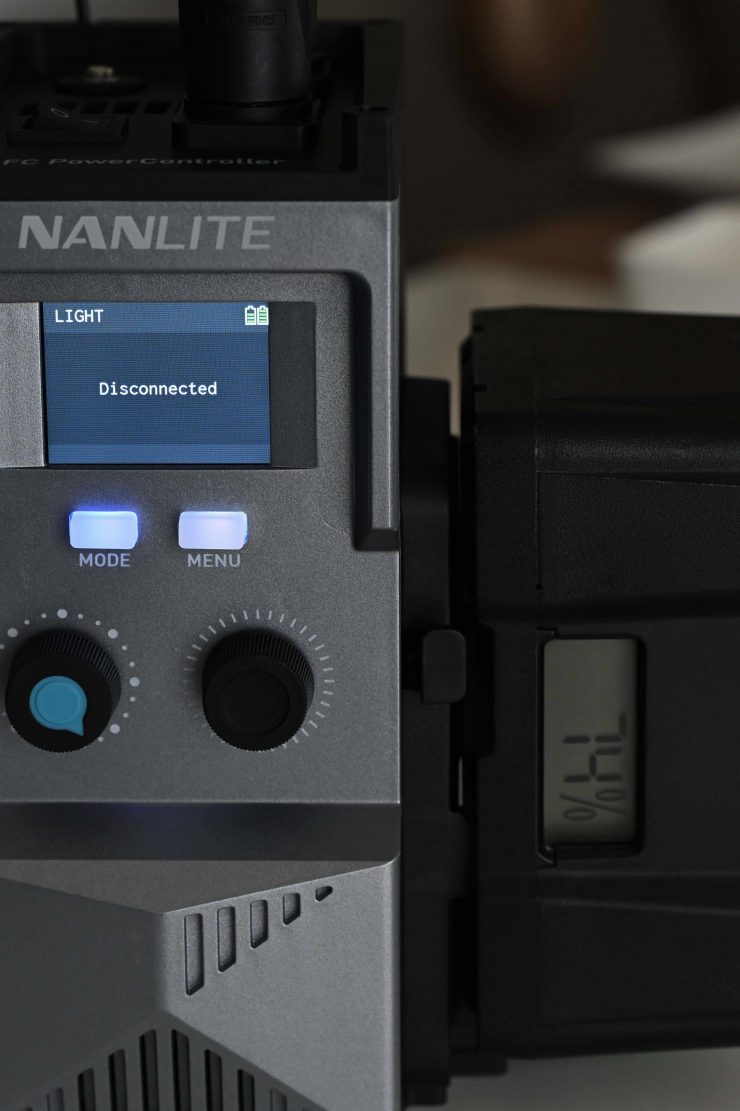
I also found that the battery icon was showing a fully charged battery even though the battery was still at 74%.
On the positive side, it did charge two batteries simultaneously without any issues.
Usability & Final Thoughts
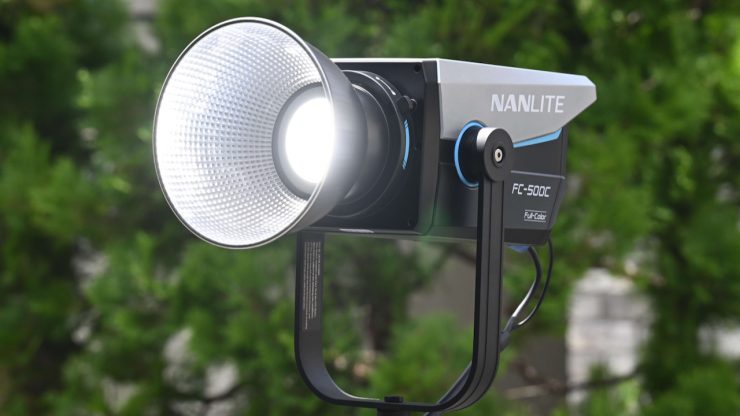
The FC PowerController is a decent solution if you need to power the FC-300B, FC-500B, or FC-500C remotely in the field. You do need to be aware of the caveats when it comes to output when using 14.4-14.8V batteries. From my testing, you can also use dual voltage 14.4V/28.8V batteries, however, with the batteries I tried they only behaved as 14.4V batteries and I didn’t get any increased output. You can only use dual-voltage batteries if they have the capability to be switched into a 28.8V mode as the FC PowerController doesn’t seem to be able to recognize that a battery is dual voltage. Unfortunately, a lot of dual-voltage batteries don’t have this ability.

There is also the caveat when using it as a V-mount battery charger where you have to also carry around the large power supply that comes with the light.
Look, there is still a lot to like about the FC PowerController, but you clearly need to be aware of the caveats that come with it if you plan on purchasing one.
Price & Availability
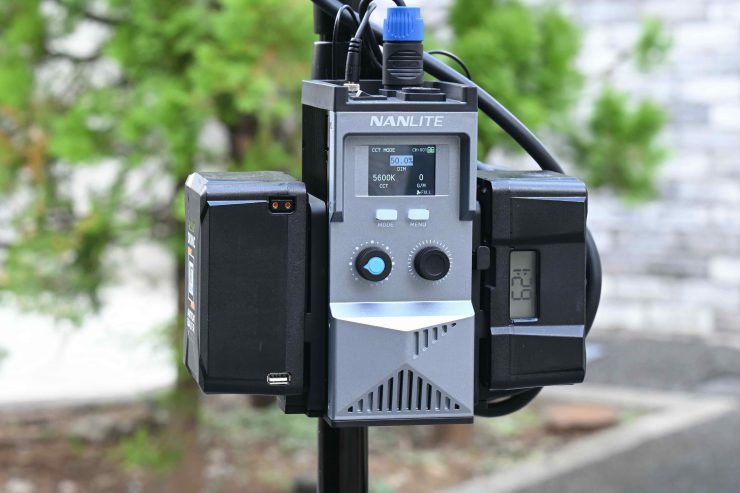
The NANLITE FC PowerController retails for $399 USD.

